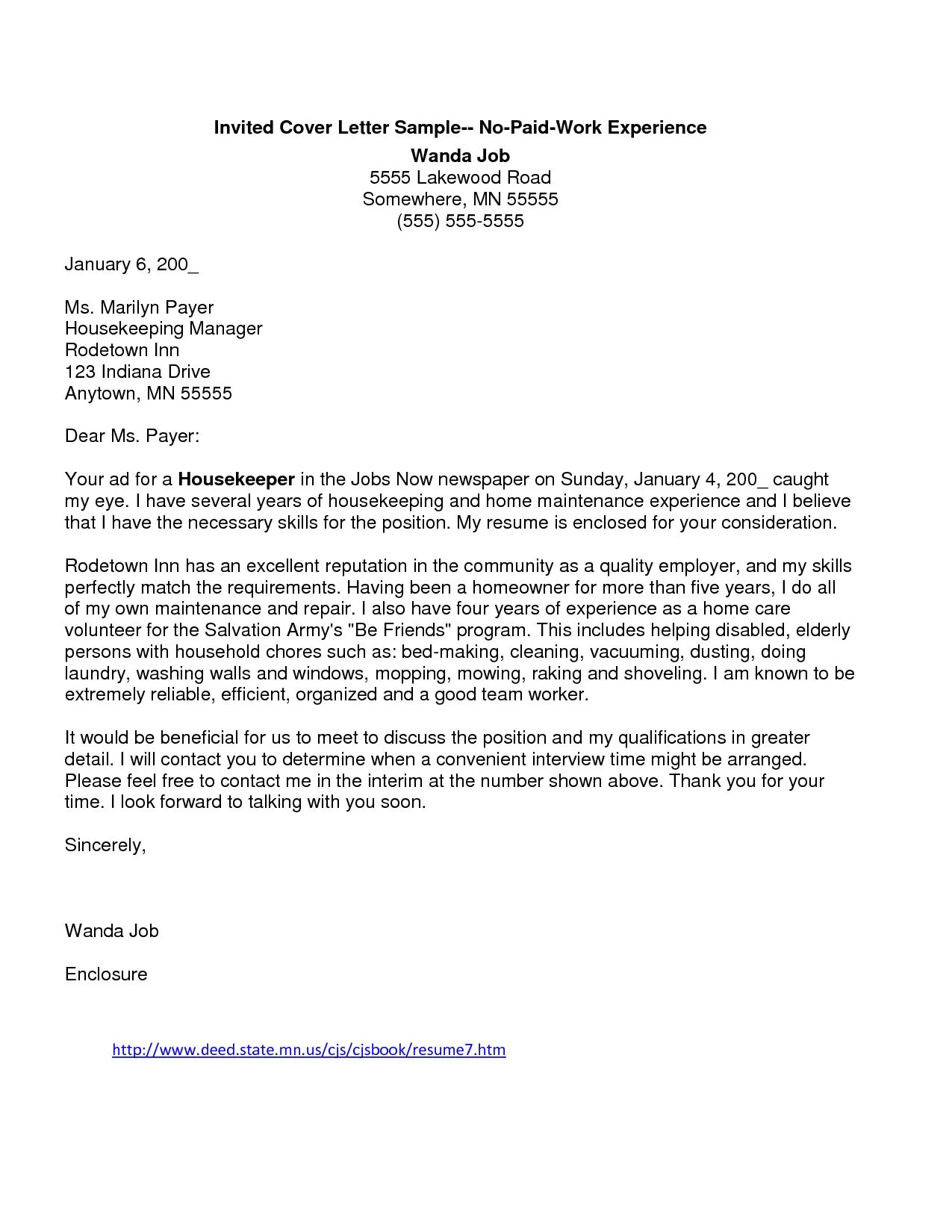Landing your first teaching job can feel daunting, especially when you’re writing a cover letter with no prior experience. However, every aspiring educator possesses a unique set of skills and a fervent passion that can shine through. This guide provides actionable steps, samples, and strategies to craft a compelling teacher cover letter, ensuring you capture the attention of hiring managers and get that coveted interview. Remember, a well-written cover letter is your opportunity to make a lasting first impression and demonstrate why you’re the ideal candidate, even without years of experience.
Highlighting Transferable Skills
When you lack direct teaching experience, focusing on your transferable skills becomes paramount. These are the skills you’ve gained from other experiences, such as volunteer work, internships, previous jobs, or academic projects, that are directly applicable to the teaching profession. Transferable skills bridge the gap and showcase your potential as a capable and enthusiastic educator, demonstrating your readiness to take on the challenges of the classroom. Carefully selecting and highlighting these skills in your cover letter can set you apart from other applicants.
Identifying Your Skills
Start by making a list of all the skills you possess. Consider various aspects of your life, including academics, extracurricular activities, part-time jobs, and volunteer experiences. Think about what you did in each role and what skills you used. What responsibilities did you have? What problems did you solve? What were you good at? Common examples include communication, organization, leadership, problem-solving, teamwork, time management, adaptability, and patience. Be thorough; the more you identify, the better equipped you will be to present a strong case.
Examples of Transferable Skills
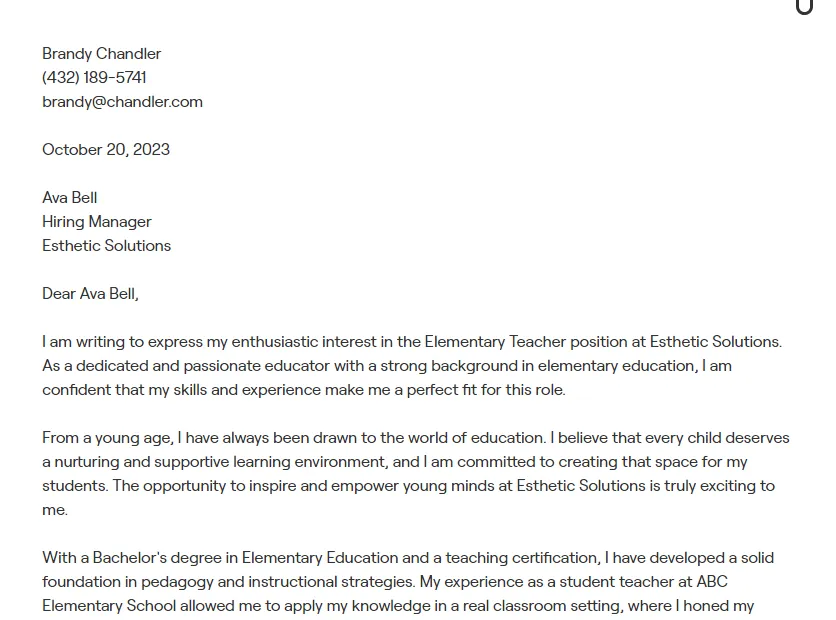
Here are some examples of transferable skills and how they relate to teaching. Communication skills gained from public speaking or presentations translate directly to classroom instruction. Leadership experience from student government or coaching demonstrates your ability to guide and motivate students. Organizational skills honed through project management or event planning show your capacity to manage classroom activities and resources effectively. Time management skills developed through juggling multiple commitments exemplify your ability to meet deadlines and prioritize tasks, crucial for lesson planning and grading.
Showcasing Your Passion
Teaching is more than just a job; it’s a calling. Hiring managers want to see your genuine enthusiasm for the profession and your commitment to students. Showcasing your passion in your cover letter is critical, as it distinguishes you and helps convey your commitment to creating a positive learning environment. Explain why you want to be a teacher and what specifically excites you about working with students and fostering their growth. Let your enthusiasm for education shine through.
Demonstrating Enthusiasm
Express your enthusiasm for teaching by discussing what aspects of teaching resonate with you. Are you excited about helping students discover new knowledge? Do you love fostering critical thinking and creativity? Do you enjoy creating a supportive classroom atmosphere? Referencing specific teaching philosophies, educational trends, or methods can further showcase your commitment and passion for the profession. Avoid generic statements. Be specific about your passions and what drives your interest in teaching.
Expressing Commitment to Education
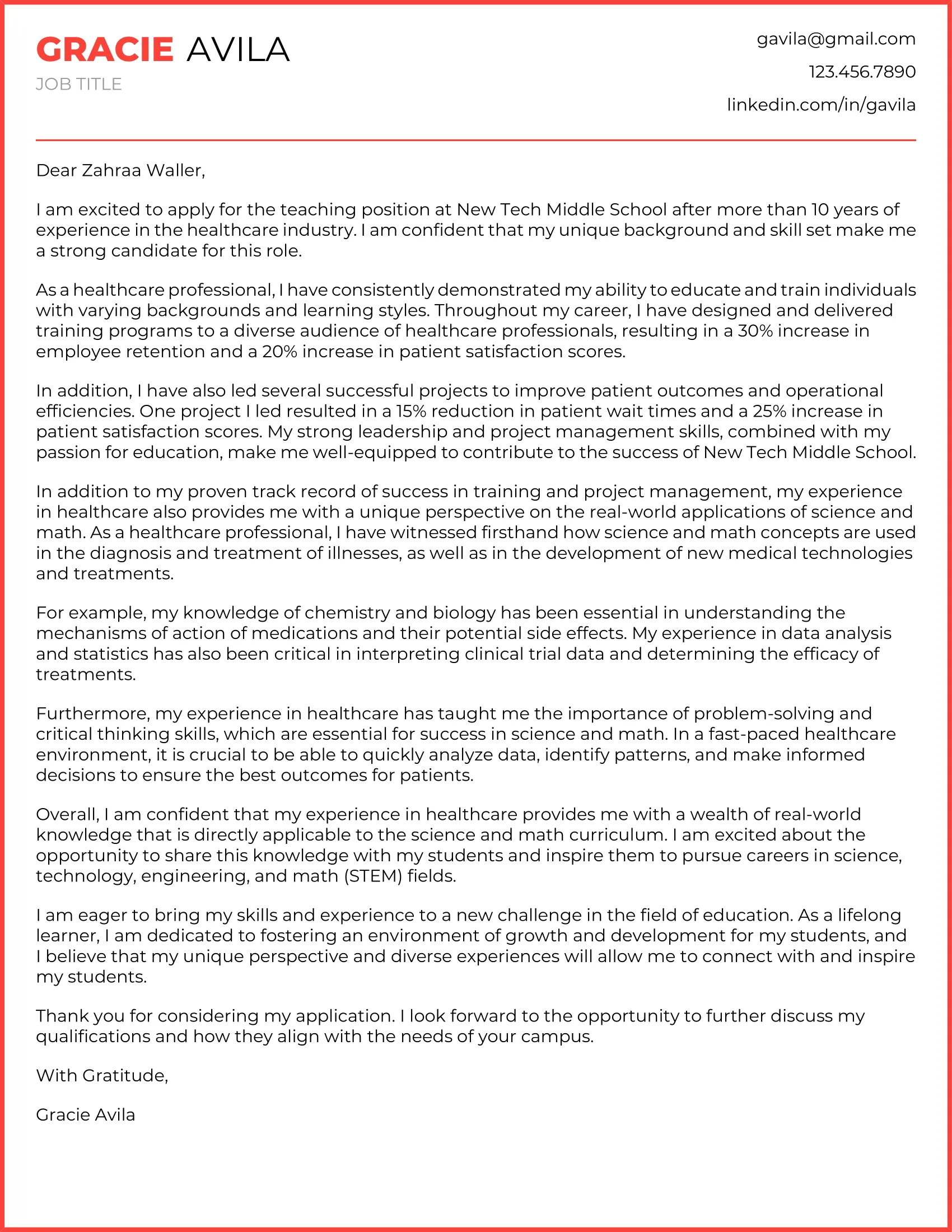
Clearly state your commitment to education. Mention any professional development activities you’ve undertaken, such as workshops, seminars, or online courses. Discuss any relevant volunteer experiences or internships you’ve completed. Highlight your goals for the future, such as pursuing advanced degrees or certifications, to demonstrate your long-term dedication to the profession. Show that you see teaching as a career, not just a job. Include specific ways you plan to contribute to the school’s environment.
Structuring Your Cover Letter
A well-structured cover letter is essential. It should be clear, concise, and easy to read. Follow a standard format that allows you to highlight your skills and passion effectively. Proper formatting improves readability and helps you to present your qualifications professionally. An organized letter also demonstrates your attention to detail and respect for the hiring manager’s time.
Header and Contact Information
Start with your contact information at the top of the letter. Include your name, address, phone number, and email address. Make sure your email address is professional. Then, include the date and the hiring manager’s name (if known), title, and the school’s address. Addressing the letter to a specific person is more personal and shows you’ve done your research.
Opening Paragraph – Grab Attention
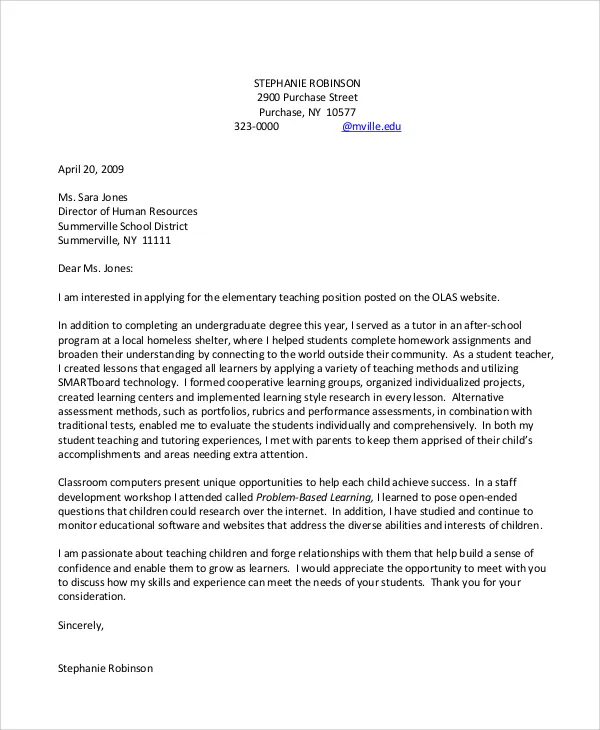
Your opening paragraph should immediately capture the reader’s attention. State the position you’re applying for and where you saw the job posting. Briefly mention your key qualifications and why you’re a good fit. Start with a compelling sentence that demonstrates your enthusiasm for teaching. For example, you could begin by stating your passion for education, or by highlighting your commitment to creating a dynamic and inclusive classroom environment. Keep it concise, and make a strong first impression.
Body Paragraphs – Sell Yourself
The body of your cover letter is where you elaborate on your qualifications. Use two to three paragraphs to highlight your transferable skills and showcase your passion for teaching. Provide specific examples of how your experiences have prepared you for the role. Quantify your accomplishments whenever possible. For example, instead of saying, “I improved student engagement,” say, “I increased student engagement by 20% through the implementation of interactive lessons.” Tailor each paragraph to the specific requirements of the job description.
Closing Paragraph – Call to Action
In your closing paragraph, reiterate your interest in the position and express your eagerness for an interview. Thank the hiring manager for their time and consideration. Include a call to action by stating that you look forward to hearing from them soon. Reiterate your contact information and encourage them to reach out. Ensure a professional and confident tone.
Formatting and Proofreading
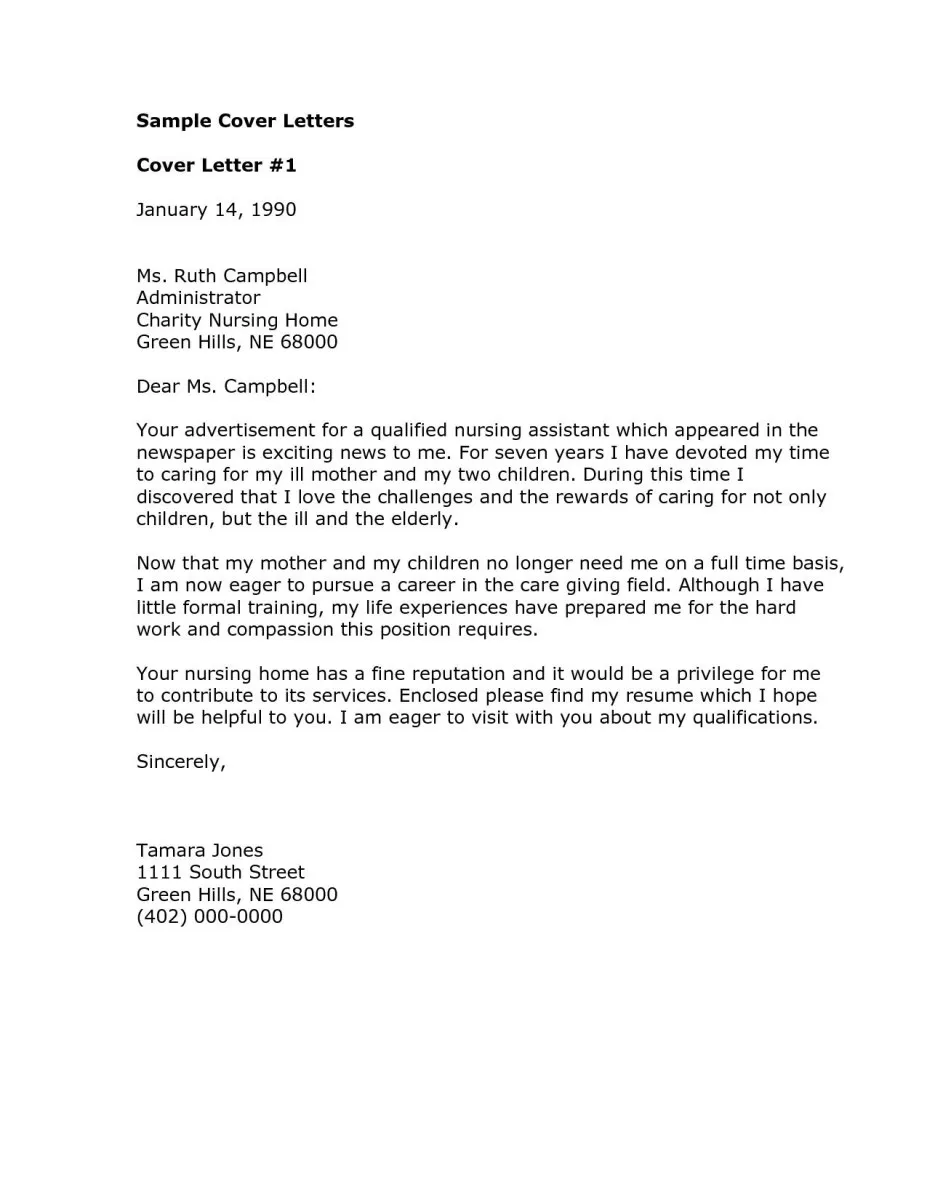
Attention to detail is critical. Formatting and proofreading are essential to ensure your cover letter is professional and polished. A well-formatted and error-free cover letter demonstrates your commitment to quality and attention to detail, which are essential qualities for a teacher. Errors and poor formatting can detract from your qualifications and make a negative impression on the hiring manager.
Font and Layout Guidelines
Choose a clean and readable font, such as Times New Roman, Arial, or Calibri. Use a font size of 11 or 12 points. Maintain consistent formatting throughout the document, including the use of headings, subheadings, and bullet points to organize information. Use one-inch margins and single-space your paragraphs. Keep the letter to one page. Avoid excessive use of bold or italicized text; it can make your letter difficult to read.
Proofreading and Editing
Proofread your cover letter carefully for any grammatical errors, spelling mistakes, and typos. Read the letter aloud to catch any awkward phrasing or unclear sentences. Ask a friend, family member, or career counselor to review your cover letter for feedback. Ensure the letter is free of errors and the language is clear and concise. A polished cover letter shows professionalism and respect for the hiring manager.
Tailoring to the School
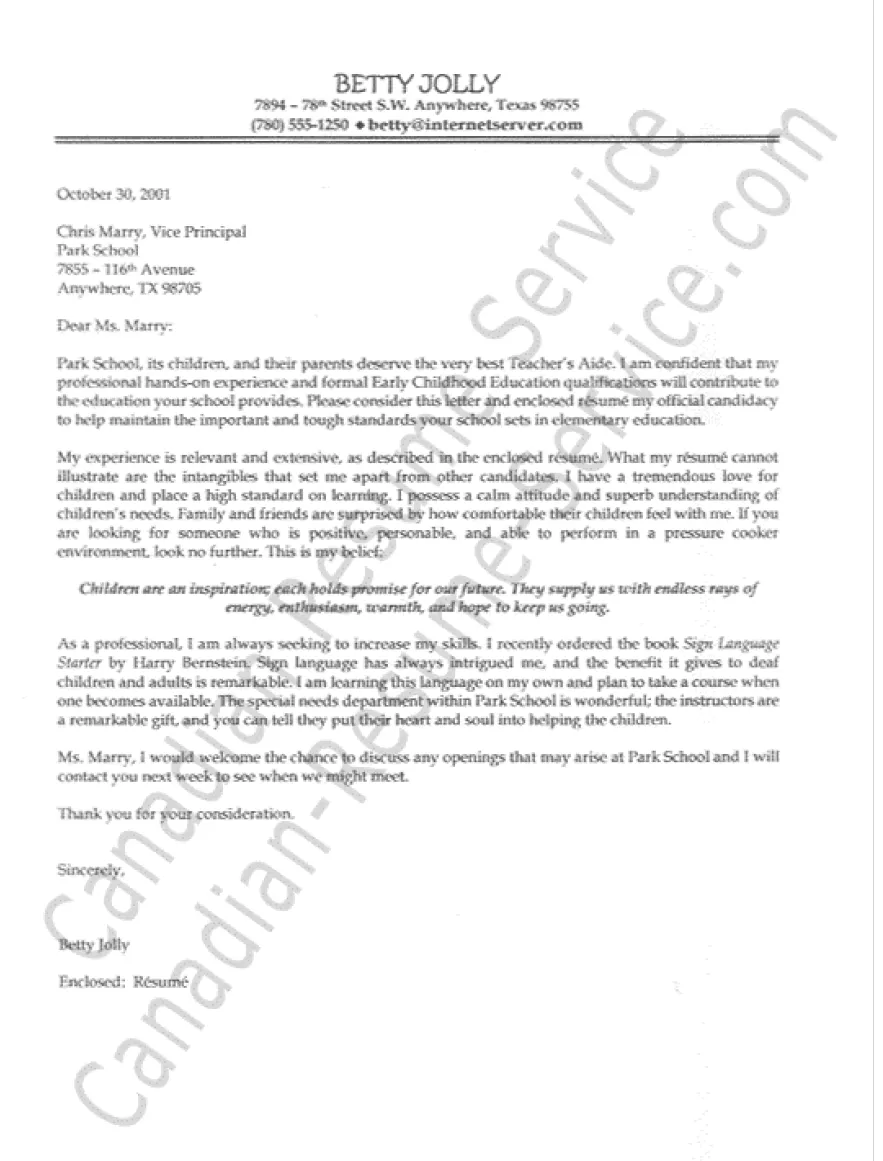
Customizing your cover letter for each school you apply to is essential. It shows that you’ve done your research and are genuinely interested in the specific position and school. Demonstrating this will set you apart from generic applicants. Customizing your cover letter will increase your chances of getting noticed and securing an interview.
Researching the School’s Culture
Before submitting your cover letter, research the school’s mission, values, and programs. Visit the school’s website, read the school’s mission statement, and check out any social media profiles. Look for information about the school’s teaching philosophy, extracurricular activities, and community involvement. Understanding the school’s culture will enable you to tailor your cover letter to align with their specific needs and values. This shows that you are truly interested in the position and are a good fit for the school.
Customizing for the Specific Role
Carefully read the job description and identify the key requirements and desired qualifications. Tailor your cover letter to highlight the skills and experiences that align with these requirements. Use keywords from the job description. If the job description emphasizes a particular teaching method or skill, make sure to incorporate it in your cover letter. Demonstrate that you are familiar with the specific role and school. Make it clear how your skills and experiences match the school’s needs.
Writing a compelling cover letter with no teaching experience requires a strategic approach. By focusing on your transferable skills, showcasing your passion, structuring your letter effectively, and tailoring it to each school, you can significantly increase your chances of getting hired. Remember to highlight your unique qualities, demonstrate your enthusiasm, and present yourself as a promising candidate. Good luck with your job search!
